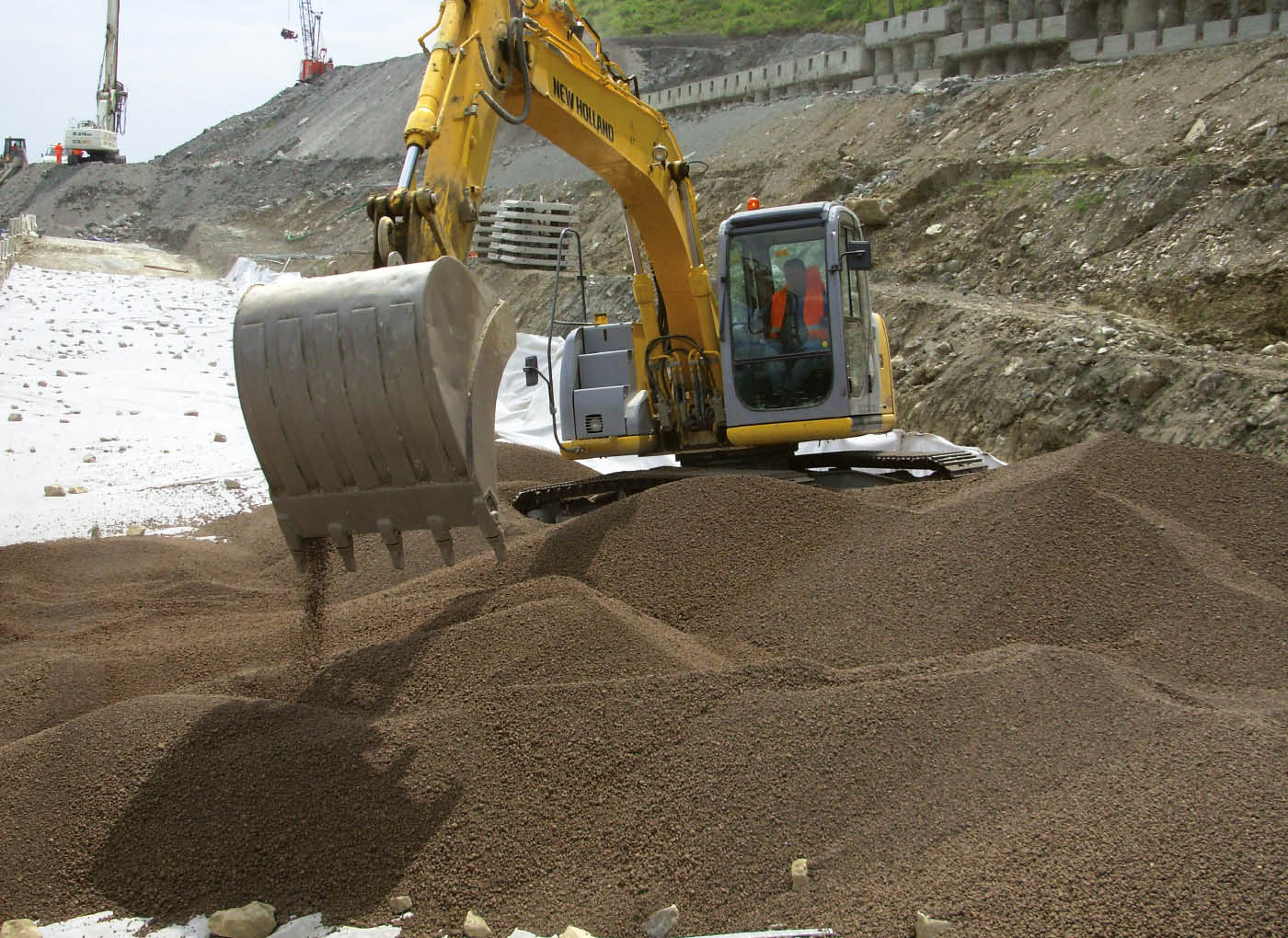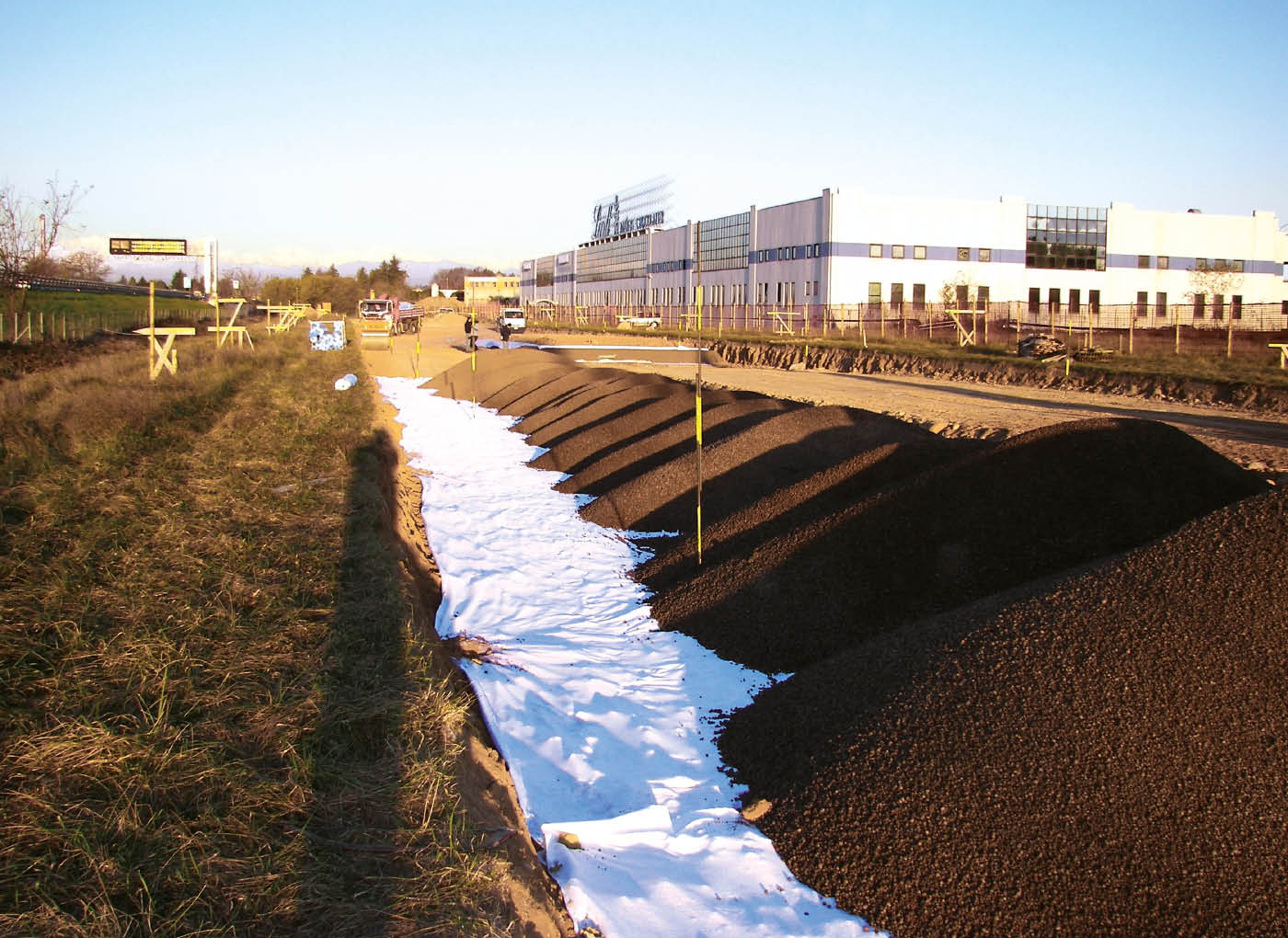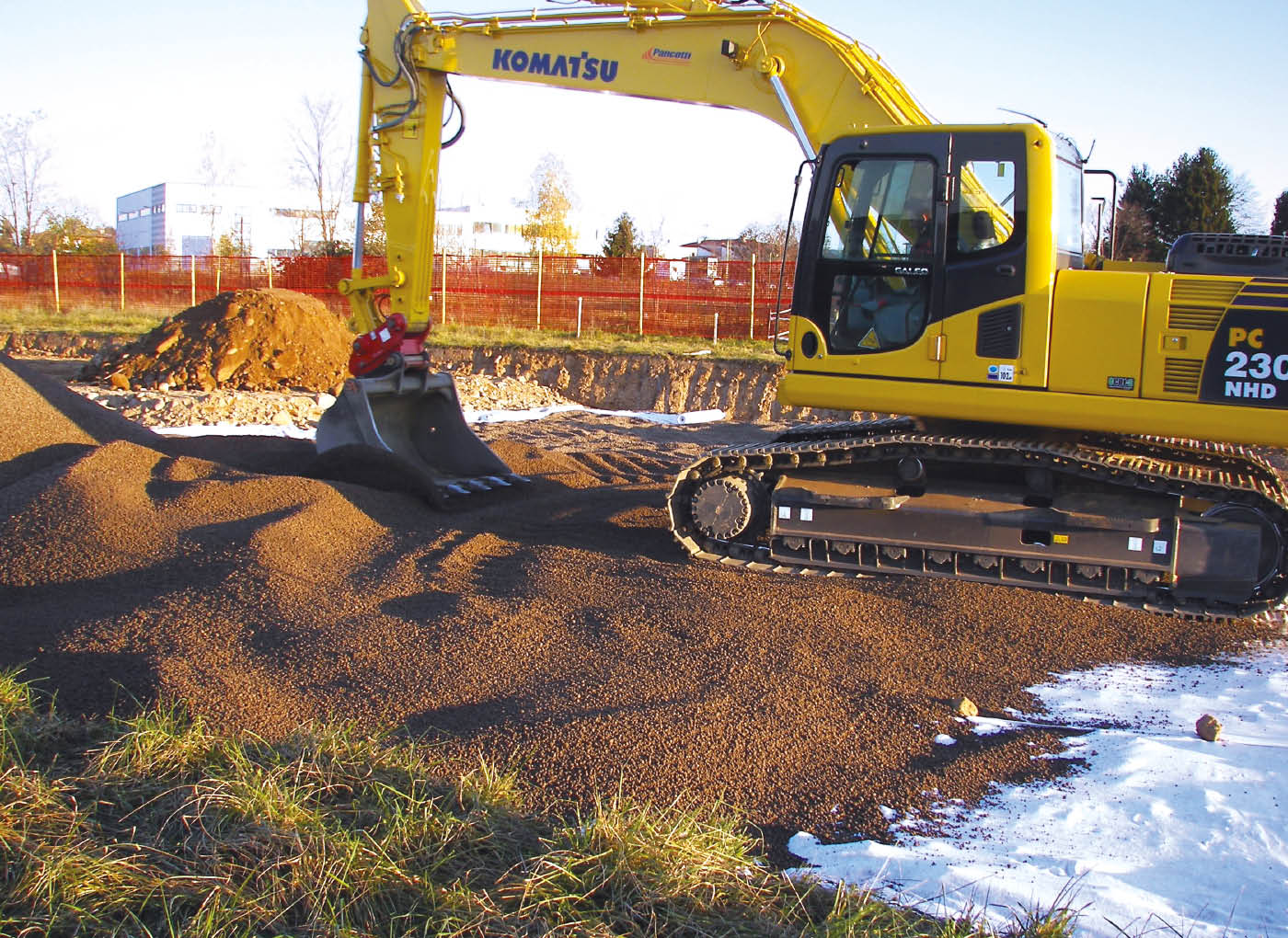The most common use of expanded clay for embankment construction is as dry-laid aggregate. There are two alternative techniques:
- Embankments (or fills) consisting of expanded clay only
Overall average density after completion: 400 – 600 kg/m3
Spreading sequence
- A geotextile separation layer is laid in contact with the compacted founding ground
- Lightweight aggregates are laid (repeated sequence until the total thickness is obtained):
- Expanded clay is laid to a thickness that is variable depending on the means of compaction used
- The surface of the expanded clay is compacted directly by multiple passes with a vibrating plate compactor (Typical Weight 50-140 kg, width 50-80 cm, contact stress < 5 kN/m2, frequency 75-100 Hz) or a tracked vehicle (excavator, shovel, bulldozer – Contact stress < 50 kN/m2) The number of passes required will depend on the thickness of the layers and the machine used.
- A geotextile separation layer is laid on top of compacted expanded clay
- Completion of the final layers: usually a final compacted subgrade (moorum, gravel or rockfill, or a mixture of these), used for load distribution and to receive the finishing layers, with a minimum thickness of 30 cm (recommended value: 40 cm). Other overlay options are possible, see FINAL LAYERS AND LOAD DISTRIBUTION.
- Embankments (or fills) consisting of alternating layers of expanded clay and granular mix (of moorum, gravel or rockfill, or a mixture of these)
Overall average density after completion: 600 – 1200 kg/m3.
The thickness of each layer can be varied depending on the design requirements.
Spreading sequence (repeated)
- A geotextile separation layer is laid in contact with the compacted founding ground.
- A first layer of expanded clay is laid to a thickness of 20 – 100 cm.
- A geotextile separation layer is laid.
- A layer of granular mix is laid to a thickness of at least 10 cm.
- The top of the granular mix layer is compacted using a vibrating roller, typically weight 15-50 kN.
The total thickness of each sandwich of clay + granular mix must not exceed 120 cm.
The final layer of granular mix, on which the finishing layers will be placed, must be at least 300 mm thick (suggested thickness: 400 mm).
Other overlay options are possible, see FINAL LAYERS AND LOAD DISTRIBUTION.
To increase the stiffness of lightweight embankments (of fills) or for technical or operational requirements, they can be constructed using Laterlite Expanded Clay bound with cement (no fine pervious concrete).
Densities ranging from 500 – 800 kg/mc and strengths from 1 – 4 MPa, depending on the type of expanded clay and the quantity of cement used.
Each layer must not be more than 50 cm thick, and compaction must be carried out with a plate vibrator.
Cemented expanded clay can be manufactured in various ways:
- Continuous on-site manufacture: expanded clay is delivered to site in tanker trucks equipped with suitable pumping gear. At the same time a cement slurry is manufactured on site using suitable machinery, and continuously injected into the pump hose as the expanded clay is delivered. The mixing takes place at this stage. This method is available in specific geographic areas only.
- Off-site manufacture in a batching plant, with delivery in concrete mixer trucks.
- On-site mixing using bagged premixes (Latermix Cem Classic or Maxi) or expanded clay and cement.
The side containment of a lightweight expanded clay embankment is possible with most of the technical solutions commonly used: reinforced earth, reinforced soil, geogrids, geotextiles, traditional containment structures, etc., depending on the needs and the lateral inclination of the planned embankment.
The lateral “angles of slope” of the embankment range from those of reinforced earth (90°) to that of the non-contained material (35-40°), or even less in case of specific design requirements.
The upper part and sides of an embankment or fill made from expanded clay can be constructed in various ways depending on its intended use, the loads carried, and the finishing materials.
The possibilities range from growth substrates for a planted top surface, compacted granular mix layers topped with bituminous layers to realise a road surface and reinforced concrete slabs for various types of top finish.
The expanded clay layers are usually separated from the final layers by a geotextile.
Specific technical solutions can be developed to meet particular design requirements.



















